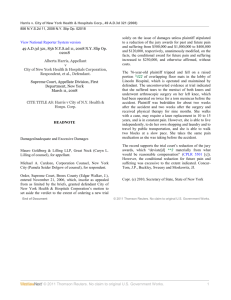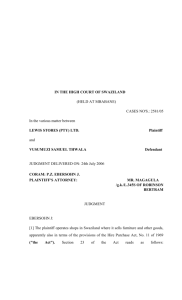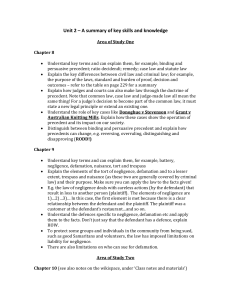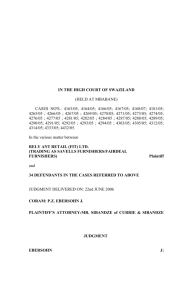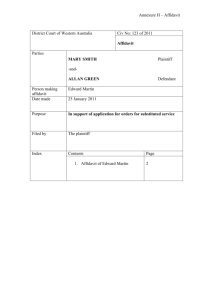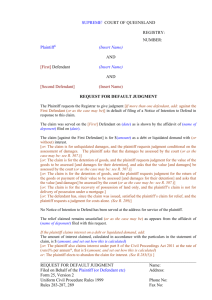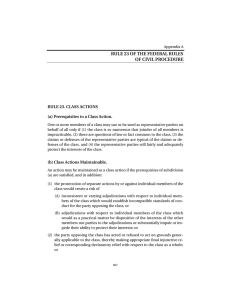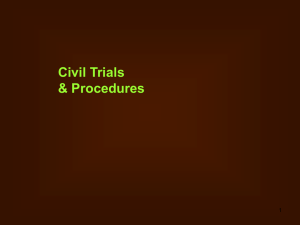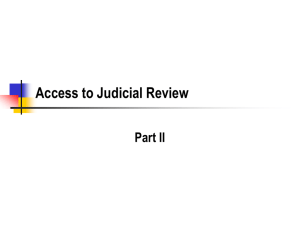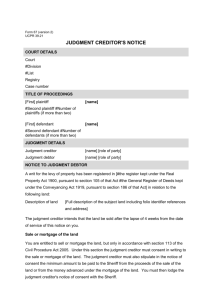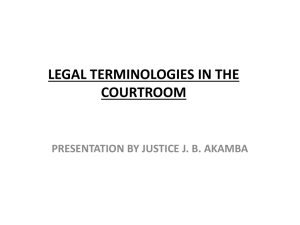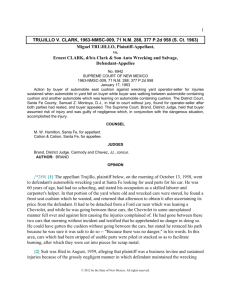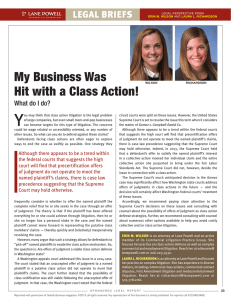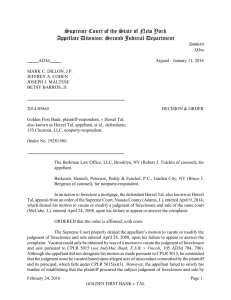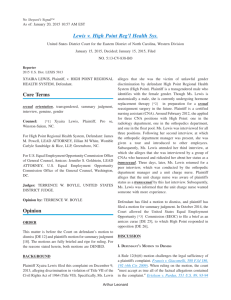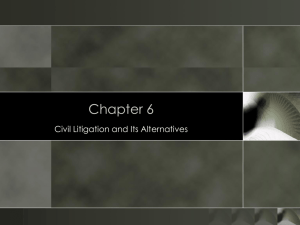Contracts Professor Knippenberg BRIEFING FORMAT Case Name
advertisement
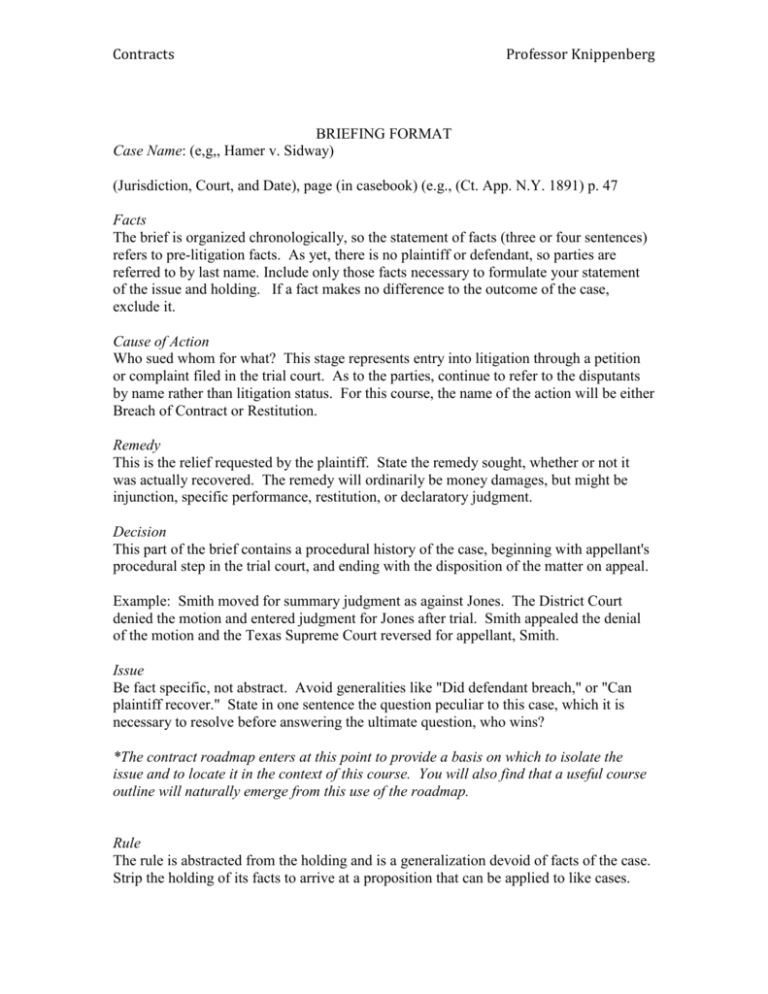
Contracts Professor Knippenberg BRIEFING FORMAT Case Name: (e,g,, Hamer v. Sidway) (Jurisdiction, Court, and Date), page (in casebook) (e.g., (Ct. App. N.Y. 1891) p. 47 Facts The brief is organized chronologically, so the statement of facts (three or four sentences) refers to pre-litigation facts. As yet, there is no plaintiff or defendant, so parties are referred to by last name. Include only those facts necessary to formulate your statement of the issue and holding. If a fact makes no difference to the outcome of the case, exclude it. Cause of Action Who sued whom for what? This stage represents entry into litigation through a petition or complaint filed in the trial court. As to the parties, continue to refer to the disputants by name rather than litigation status. For this course, the name of the action will be either Breach of Contract or Restitution. Remedy This is the relief requested by the plaintiff. State the remedy sought, whether or not it was actually recovered. The remedy will ordinarily be money damages, but might be injunction, specific performance, restitution, or declaratory judgment. Decision This part of the brief contains a procedural history of the case, beginning with appellant's procedural step in the trial court, and ending with the disposition of the matter on appeal. Example: Smith moved for summary judgment as against Jones. The District Court denied the motion and entered judgment for Jones after trial. Smith appealed the denial of the motion and the Texas Supreme Court reversed for appellant, Smith. Issue Be fact specific, not abstract. Avoid generalities like "Did defendant breach," or "Can plaintiff recover." State in one sentence the question peculiar to this case, which it is necessary to resolve before answering the ultimate question, who wins? *The contract roadmap enters at this point to provide a basis on which to isolate the issue and to locate it in the context of this course. You will also find that a useful course outline will naturally emerge from this use of the roadmap. Rule The rule is abstracted from the holding and is a generalization devoid of facts of the case. Strip the holding of its facts to arrive at a proposition that can be applied to like cases. Contracts Professor Knippenberg Holding/Application Apply the Rule to the facts to resolve the issue. The Holding differs from the Rule in that the former is fact-specific to the case at hand, while the latter is a generality or abstraction. It is an amalgam of the Rule and Issue.



